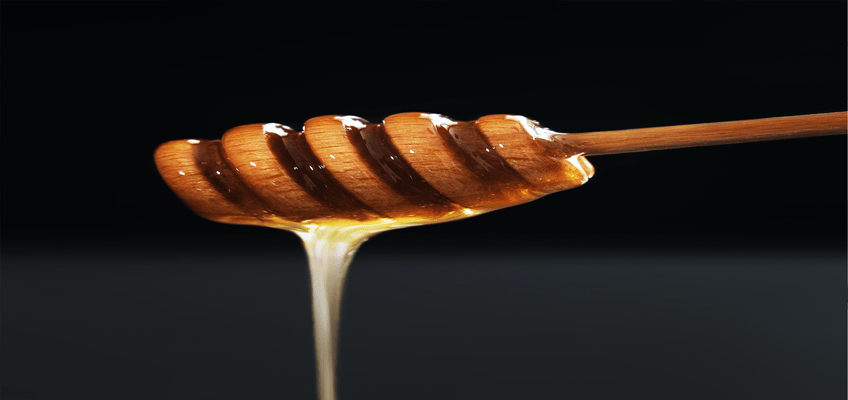
Is All Mead Made From Honey?
Mead, also known as honey wine, has been around for centuries and is gaining popularity once again. When you think of mead, the first thing that may come to mind is honey.
However, did you know that not all mead is made from honey? That’s right! There are various types of mead with different ingredients, alcohol content levels, and flavors. In this blog post, we will explore the world of mead beyond just its sweetness and discover what really goes into making a glass of this delicious alcoholic beverage. So grab a mug or goblet and let’s dive in!
Understanding Mead
Mead is an alcoholic beverage that has been around for millennia, and it is made by fermenting honey and water with yeast.
Definition And Origins
Mead is a type of alcoholic beverage made from honey, water, and yeast. It’s often referred to as “honey wine”, but it’s distinct from other wines in both taste and production process. Mead has been enjoyed for thousands of years across various cultures around the world.
The origins of mead can be traced back to ancient times and are believed to date back over 9,000 years. It was a popular drink among many civilizations including the Greeks, Vikings, and ancient Chinese. In fact, mead was so highly regarded amongst the Vikings that they believed it to be a divine nectar or “drink of the gods.”
Today, mead continues to enjoy global popularity due to its unique flavor profile and versatility in recipe variations from mead maker to mead maker.
Ingredients In Mead
Mead is a unique drink that has been enjoyed for centuries. Mead’s most basic recipe consists of only three ingredients: honey, yeast, and water. However, mead can also be made with fruits, spices, grains, or hops to give it a unique flavor profile.
The type and quality of the honey used in mead production significantly impact the taste and alcohol content of the final product. Flavored meads are becoming increasingly popular among drinkers looking for new and exciting flavors in their alcoholic beverages and wine grapes. Some common fruit additions include berries or citrus fruits while others use spices such as cinnamon or cardamom for additional complexity.
Overall, understanding what goes into making mead can allow enthusiasts to better appreciate its versatility as a beverage. Plus these variations make for great tasting experiences!
Traditional Mead Recipe
Mead has a long history and is considered one of the oldest alcoholic beverages. The traditional recipe for mead involves mixing water, yeast, and honey in a container and allowing it to ferment. Mead makers can vary the recipe by adding different fruits, spices, or herbs into the mixture.
The fermentation process is key when it comes to making mead. Yeast consumes the sugar from honey and converts it into alcohol. This process can take weeks to months depending on factors like temperature and ingredients used. Once complete, some meads are aged in barrels or bottled immediately.The result is a flavorful beverage enjoyed both as an alcoholic drink and as a health tonic.
Overall, traditional mead recipes are simple but require patience during fermentation to obtain desired results. If you’re interested in trying your hand at making this ancient beverage, there are plenty of resources available online – so go ahead!
Misconceptions About Mead
Many people believe that all mead is made from honey, but this is a misconception as other sweeteners such as agave or fruit can be used in the production of mead. Additionally, not all meads are sweet and they can range from dry to semi-sweet to very sweet depending on the recipe.
Lastly, while many associate mead with medieval times, it has become increasingly popular today with creative variations being developed and a focus on sustainability and local sourcing in its production.
Not All Mead Is Made From Honey
While honey is the main ingredient in mead, it’s important to note that not all meads are made exclusively from honey. Mead can be flavored with fruits like cherries and apples or spices like cinnamon and ginger, adding unique flavors to the beverage.
Some meads even use grains or hops similar to beer brewing techniques. So, while traditional mead recipes call for only three ingredients – honey, yeast, and water – modern variations have added a whole new dimension to this ancient drink.
It’s also worth noting that mead can vary greatly in sweetness levels. While some may associate mead with being incredibly sweet due to its ties with honey, many varieties have little sweetness at all. Dry and semi-dry options exist on the market as well as hydromels which have low alcohol content and high carbonation making them an easy drinking choice for extended sipping sessions.
In conclusion, not all meads are made exclusively from honey nor are they always incredibly sweet beverages. Regardless of how it is crafted though, one thing remains true – this timeless beverage will continue captivating drinkers around the globe for years to come!
Mead Can Be Dry Or Sweet
Contrary to popular belief, mead is not always sweet. In fact, meads can range from dry to sweet depending on the maker’s recipe and preference. Dry meads are made with less honey and may have a higher alcohol content, while sweet meads use more honey or other sweeteners for a smoother taste. This variety of sweetness levels makes it easy for anyone to enjoy this unique drink.
When it comes to choosing between dry or sweet mead, it ultimately depends on personal taste. Some people prefer the bold flavor profile of dry mead, while others find the subtle sweetness balance of a traditional honey-based recipe more appealing.
With so many varieties available on the market today and countless creative variations in production techniques emerging all the time; there has never been a better time than now to explore all that this ancient ferment has to offer!
Mead Is Not Just A Medieval Drink
Mead has long been associated with medieval times, but it is far from being a drink of the past. In fact, mead has seen a resurgence in popularity in recent years among craft brewers and meaderies. Today’s mead makers are using innovative techniques and creative flavors to push the boundaries of traditional mead-making.
Many modern meads are not just sweet and syrupy but can range from dry to semi-sweet or even sparkling varieties. The use of fruits, spices, grains, and hops has expanded the possibilities for flavor combinations beyond just honey. Mead production today is an artisanal craft that allows for experimentation and creativity while still honoring the ancient traditions of making this unique drink.
In conclusion, while medieval times may have paved the way for mead’s popularity, today’s market offers endless opportunities to explore the many variations made with new ingredients and techniques available worldwide.
This once humble beverage is now widely recognized as an exceptional one that boasts many health benefits due to its natural antiseptic properties which help support gut health while maintaining healthy skin appearance. Therefore it goes beyond a mere fermented product and stands out as one worthy enough on any menu card!
Other Ingredients Used In Mead Making
Mead can also be flavored with a variety of other ingredients such as fruits, spices, grains, and hops to create unique and complex flavors.
Fruits, Spices, Grains, and Hops
Aside from honey, Mead can also have different variations depending on the fruits added in the fermentation process. Fruits like cherries, apples, and berries can be used either as the primary fermentable or just for additional flavoring.
Spices and botanicals like lavender, cinnamon, nutmeg and many others can elevate the taste to a unique level. Grains such as oats can give that smooth texture while hops offer bitterness similar to beer.
Mead makers are quite known for their creativity in using various ingredients when making mead aside from honey. Adding natural ingredients not only adds flavor but nutrients too that provides a wide range of health benefits plus drinking mead with fruits, spices, grains or hops is gluten-free which makes it an excellent option compared to other alcoholic drinks.
The variety of flavors brought about by combining these ingredients has created some intriguing combinations over time. It’s now possible to find fruity-flavored meads like Strawberry Basil or spiced meads infused with vanilla bean extract and even those mixed with coffee beans!
If you’re curious about trying something new without compromising your love for Honey wine (mead), then you should definitely consider experimenting with flavored varieties – You won’t regret it!
Other Sweeteners Used Besides Honey
Although honey is the primary sweetener used in mead, other sweeteners can be used to create unique flavors. Maple syrup, agave nectar, and molasses are some examples of alternative sweeteners that can be added to mead recipes. These additions provide different taste notes and depth to the drink.
Another popular sweetener in mead-making is fruit juice or concentrate. When added before fermentation begins, it not only adds sweetness but also introduces a fruity flavor profile. For example, apple juice or grape juice can be added to mead to make it into a pyment or cyser. Some common fruits used for this purpose include raspberries, blackberries, cherries, and apples.
Overall, while honey remains the classic ingredient in traditional mead making, experimenting with various alternative sweeteners offers endless possibilities for crafting new delicious combinations of this ancient beverage.
The Relevance Of Mead Making Today
Today, mead-making is seeing a resurgence of interest and popularity due to its unique flavor profiles, low gluten content and perceived health benefits.
Read on to discover more about the creative variations in mead-making techniques and the role of sustainability and local sourcing in mead production.
Increasing Popularity Of Mead
In recent years, this fermented honey drink has been gaining popularity in the United States and around the world, partly thanks to the distilling and craft beer movements. Thanks to innovative mead-making techniques and a growing appreciation for craft beverages, more people are discovering this ancient drink.
According to the American Mead Makers Association, over 200 meaderies have popped up across the country, producing unique variations of mead that combines flavors like lavender and lemonade or apple pie spices to produce an alcoholic beverage that packs a punch.
As consumers become more health-conscious, they are also choosing mead as a healthier alternative to other alcoholic beverages. Unlike beer or wine, mead is gluten-free and has fewer ingredients overall. With its natural sweetness from honey and various fruits used in production, it can also be enjoyed without added sugars. Mead’s low alcohol content also makes it perfect for casual drinking occasions.
With all the benefits associated with consuming mead as well as its increasing availability commercially; there’s no better time than now to explore what this unique drink has to offer!
Creative Variations In Mead-Making Techniques
Mead has been produced for centuries using the traditional recipe of honey, water, and yeast. However, as the popularity of mead continues to grow, so does the creativity in mead fermentation and production. Nowadays, mead makers are experimenting with unique ingredients like fruits and spices to create flavors that range from sweet to dry.
Some producers are even taking inspiration from their local surroundings to make “farm-to-table” meads with locally-sourced honey and other natural ingredients like flowers or herbs. These variations give drinkers a new way to experience this ancient beverage while supporting local businesses.
Whether you prefer traditional or experimental flavors, there’s no shortage of creative variations in mead making techniques today. With so many unique options available on shelves or at a mead tasting, it’s clear that this simple yet sophisticated fermented beverage will continue to captivate audiences for years to come.
Sustainability And Local Sourcing In Mead Production
Sustainability and local sourcing have become popular buzzwords in the food and beverage industry, and mead production is no exception. With an increasing focus on reducing our carbon footprint, many meaderies are turning to locally sourced ingredients for their recipes. This not only supports small businesses but also promotes sustainable agriculture practices.
Mead makers are using a variety of local produce such as berries, herbs, and flowers to flavor their meads while promoting biodiversity in the region. Some even partner with local beekeepers to source honey from nearby hives – this ensures that the bees aren’t subjected to long transportation distances while also supporting small-scale beekeeping operations.
As more consumers seek out ethically and sustainably produced products, it’s encouraging to see how some meaderies are embracing environmentally-friendly practices in their production processes.
By choosing locally sourced ingredients over those sourced from overseas or mass-produced farms, we can help reduce our impact on the environment while enjoying delicious mead flavors that reflect our community’s unique characteristics.
Conclusion
In conclusion, while mead is often associated with honey, it’s not the only ingredient used to make this unique drink. Fruits, spices, grains, and hops can all add new dimensions to the flavors of mead.
Mead’s increasing popularity has led to creative variations in its production techniques and an emphasis on sustainability and local sourcing. As one of the oldest alcoholic beverages in human history, mead continues to evolve as a relevant part of our drinking culture today.
So whether you’re sipping traditional honey wine or a modern flavored mead creation, raise your glass and enjoy this delicious beverage that truly stands out from the rest!

5 Interesting Facts About Viking Drinking Horns
3 Stages Of Mead Making Process


